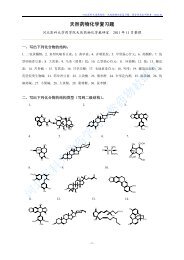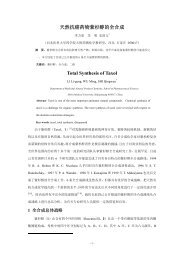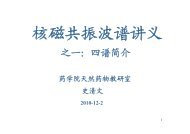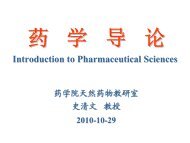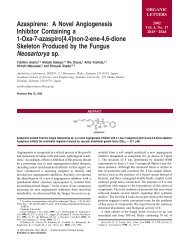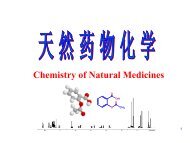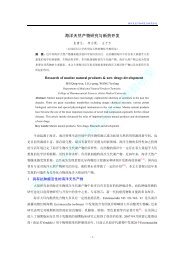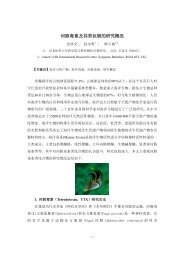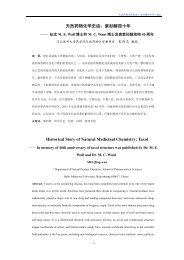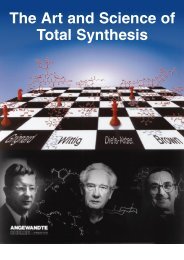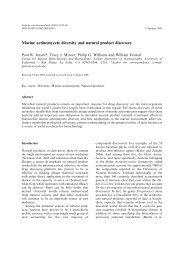Total Synthesis Highlights
Total Synthesis Highlights
Total Synthesis Highlights
Create successful ePaper yourself
Turn your PDF publications into a flip-book with our unique Google optimized e-Paper software.
Sordaricin (2) is the aglycone of sordarin (3), the parent of a family of clinically-effective<br />
antifungal agents. Lewis N. Mander of the Australian National University has published (J. Org.<br />
Chem. 2005, 70, 1654.) a full account of their enantioconvergent synthesis of 2 (see below), based<br />
on the intramolecular Diels-Alder cyclization of the triene 1. For a complementary total synthesis<br />
by Narasaka of sordaricin (2), see Org. Chem. <strong>Highlights</strong> 2005, April 4.<br />
To prepare 1, two enantiomerically-pure pieces were needed, 10 and 11. As it developed, 10 was<br />
prepared from one enantiomer of 4, and 11 was prepared from the other enantiomer of 4. In both<br />
the synthesis of 10 and the synthesis of 11, the folded nature of the tricyclic ring system was used<br />
to control relative (and absolute) configuration around the cyclopentane ring. Conjugate addition<br />
to (+)-4 followed by alkylation led to the cis dialkyl 5. The retro Diels-Alder unmasking of the<br />
enone was effected by heating to reflux in 1,2-dichlorobenzene while a stream of nitrogen was<br />
bubbled through the solution. Conjugate addition to 6 proceeded to the more open face of the<br />
enone, to give 7. Removal of the carbonyl under conditions that did not epimerize the adjacent<br />
methyl group followed by oxidation of the isopropenyl group then led to 10.<br />
With the iodide 10 in hand, the preparation of the triene 15 could proceed. The single quaternary<br />
center of 15 was constructed by deprotonation of the nitrile 11, followed by alkylation with 10.<br />
Again, bond formation proceeded on the outside face of the tricyclic ketone, to give 12. Because it<br />
was thought (correctly, as it developed) that the Diels-Alder cyclization would proceed with<br />
higher selectivity at lower temperature, 13 was cracked to give the enone 14.<br />
Methoxycarbonylation with the Mander reagent followed by enol triflate formation and<br />
Cu-mediated coupling then delivered the triene 15.



